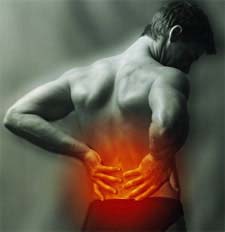 For the treatment of acute low back pain, “improvements using NSAIDs [nonsteroidal anti-inflammatory drugs] vs placebo are modest, and whether NSAIDs confer greater benefit than acetaminophen (paracetamol, Tylenol) is controversial,” according to Dr. Charles Vega from the University of California, Irvine.
For the treatment of acute low back pain, “improvements using NSAIDs [nonsteroidal anti-inflammatory drugs] vs placebo are modest, and whether NSAIDs confer greater benefit than acetaminophen (paracetamol, Tylenol) is controversial,” according to Dr. Charles Vega from the University of California, Irvine.
Here’s his view of spinal manipulation.
“The body of research into the efficacy of spinal manipulative therapy is more complicated and difficult to interpret [compared to NSAIDs]. The techniques for manipulative therapy are more heterogeneous than medical therapy; and studies have compared manipulative therapy with multiple different control treatments, making it difficult to draw a conclusion regarding treatment efficacy.”
One review of the medical literature reported, “Spinal manipulative therapy was significantly superior to sham therapy… However, spinal manipulation therapy was not superior to general practitioner care, analgesics, physical therapy, back exercises, or back school [classes in back anatomy; causes, diagnosis, and treatments of low back pain; and postural or ergonomic advice].”
“Together,” writes Dr. Vega, “these reviews of NSAIDs and spinal manipulative therapy do not provide overwhelming evidence of superior efficacy of either treatment over good routine care of acute low back pain.”
The bottom line?
“Although it may be difficult for both patients and providers to accept that time appears to be the best therapy for low back pain,” concludes the author, “most cases of back pain improve significantly within 2 weeks, and 90% of patients report significant improvement at 2 months.”
Dr. Vega, who is Assistant Clinical Professor and Associate Residency Program Director in the Department of Family Medicine acknowledges the safety issues associated with acetaminophen, but then falls back to what he knows best — patients should be encouraged to maintain appropriate activity and take acetaminophen to improve symptoms of acute low back pain. But it appears that “giving the body time to recover is the key element of treatment. This common diagnosis requires prescriptive restraint.”
5/3/08 21:02 JR